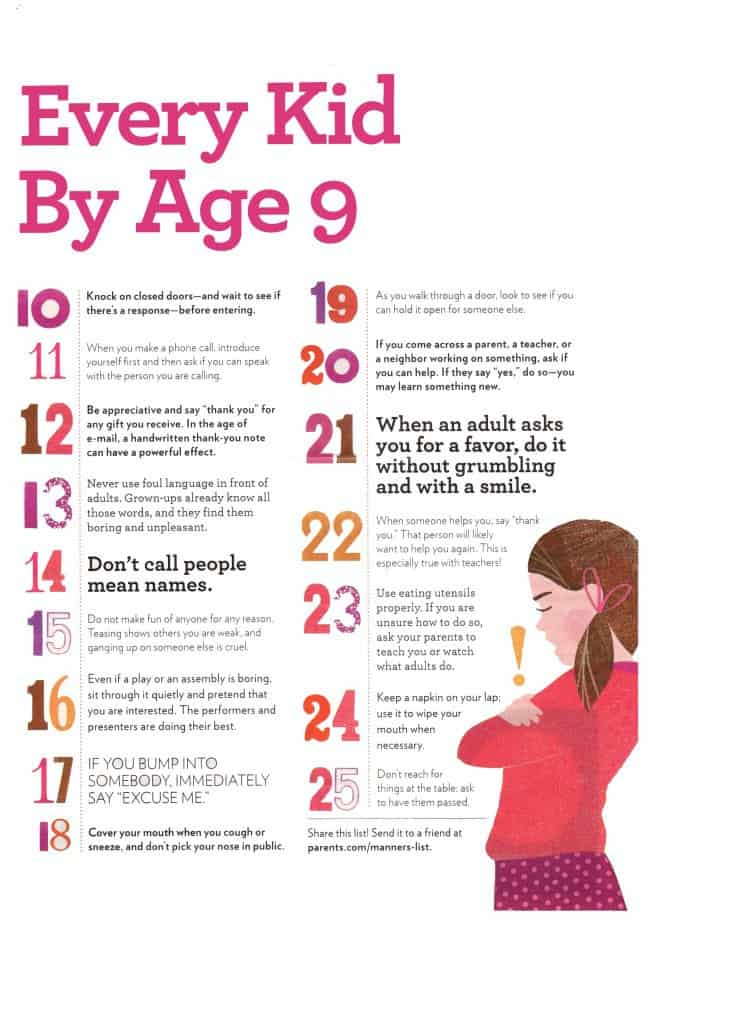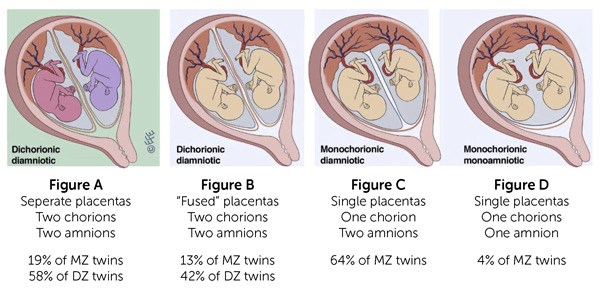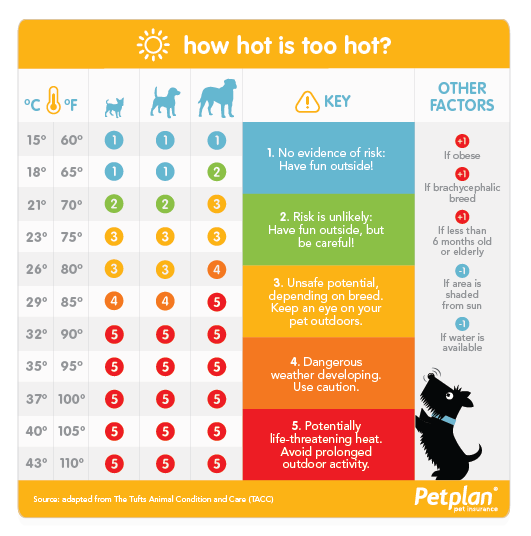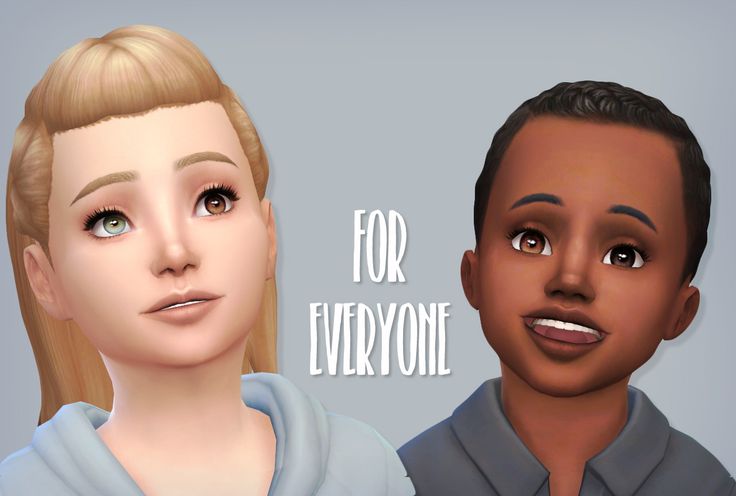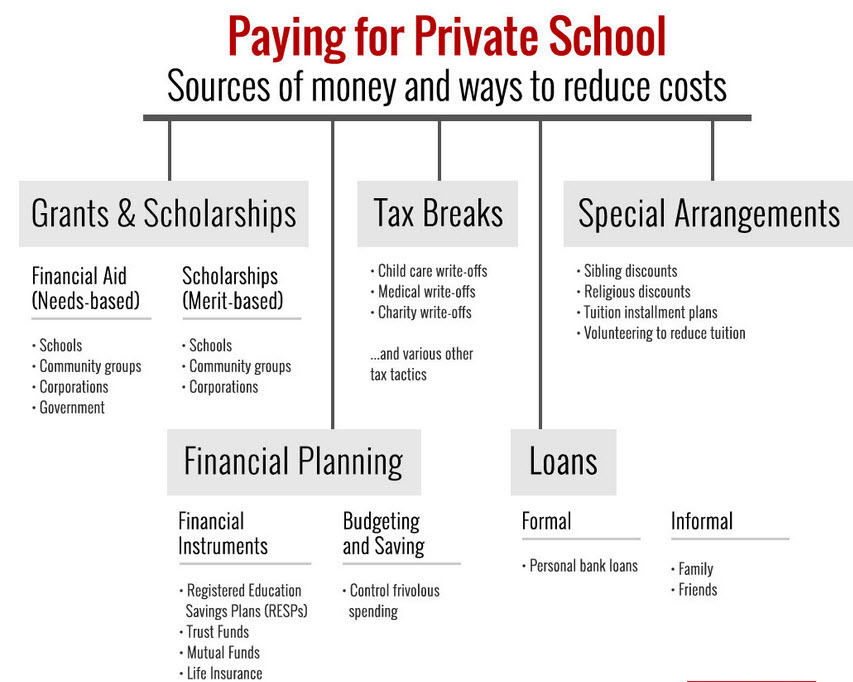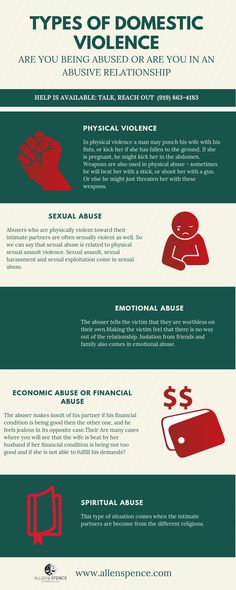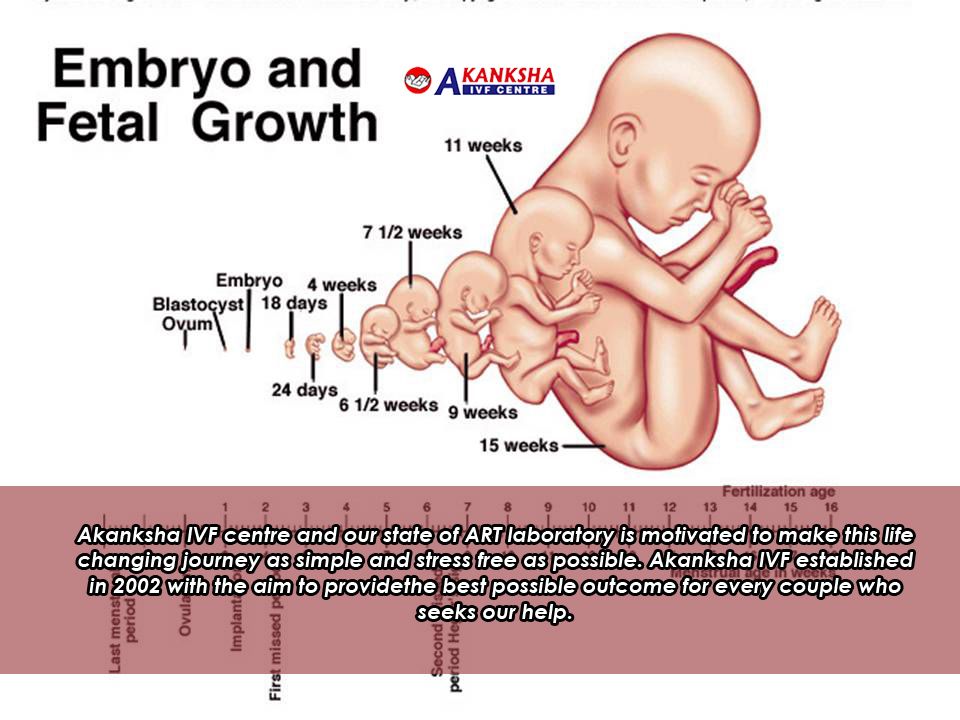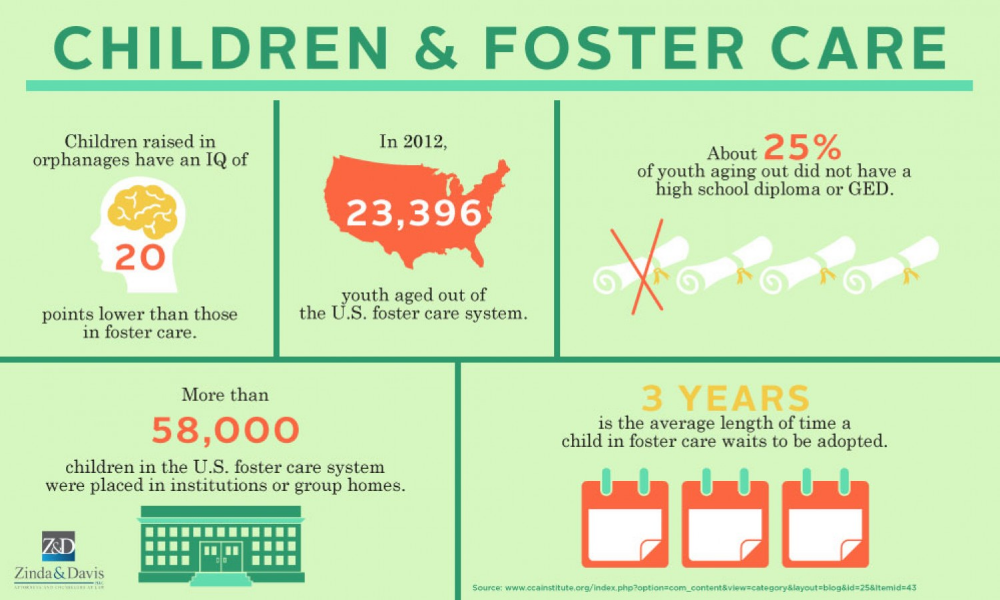How to help child with anxiety stomach aches
Anxious Stomach Aches and Headaches
All kids get an occasional headache or stomach ache — think not enough sleep or too much Halloween candy. But when children get them often, they may be signs of anxiety.
Stomach aches in the morning before school. Headaches when there’s a math test on the schedule. Butterflies before a birthday party. Throwing up before a soccer game. These physical symptoms may be the first evidence a parent has that a child is anxious. In fact, the child may not even know they are anxious.
“Especially with kids who may not be able to verbalize what they’re feeling anxious about, the way their anxiety manifests can be through physical symptoms,” explains Amanda Greenspan, LCSW, a clinical social worker at the Child Mind Institute.
Physical symptoms of anxiety
In fact anxiety is associated with a host of physical symptoms, including headaches, nausea, vomiting and diarrhea, along with a racing heart, shakiness or sweating — symptoms older people experience when they’re having a panic attack.
All these physical symptoms are related to the fight-or-flight response triggered when the brain detects danger. All of them have a purpose, notes Janine Domingues, PhD, a clinical psychologist at the Child Mind Institute. When she talks to kids about anxious headaches or stomach aches, she explains the role of each. For instance, she says, “your stomach hurts because your digestive system is shutting down to send blood to other areas of your body. You don’t want to be digesting food at that moment because you’re trying to either flee danger or fight danger.”
Dr. Domingues assures children that these symptoms are not harmful — they’re just their emergency system responding to a false alarm. But it’s important to understand that kids aren’t necessarily inventing their symptoms, and the danger may feel very real to them. Don’t assume a child who spends a lot of time in the nurse’s office at school is doing it intentionally to get out of class. Their acute anxiety may be causing them pain.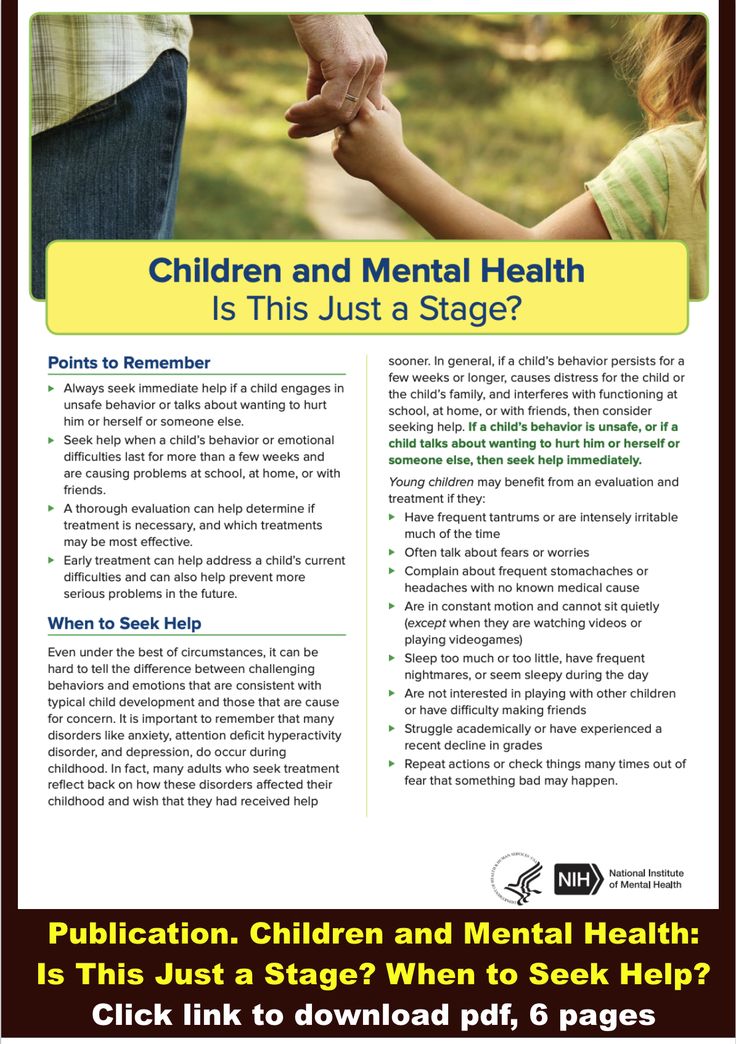
“Headaches and stomach aches related to anxiety are still real feelings, and we want to take them seriously,” says Ms. Greenspan.
Check with your pediatricianWhen a child develops a pattern of physical symptoms before school, or other potentially stressful moments, experts recommend that you visit your doctor to rule out medical concerns. But if the child gets a clean bill of health, the next step is to help the child make the connection between their worries and their physical symptoms.
“We help them understand in a very child-friendly way that sometimes our body can actually give us clues into what we’re feeling,” explains Ms. Greenspan.
Parents can start by validating their child’s experience and reframing it in a more helpful way. Instead of telling kids there’s nothing wrong with them, the goal is to tell them that what they’re feeling is worry.
“We give it a name,” adds Dr. Domingues. “We help them connect it to an emotion and label it.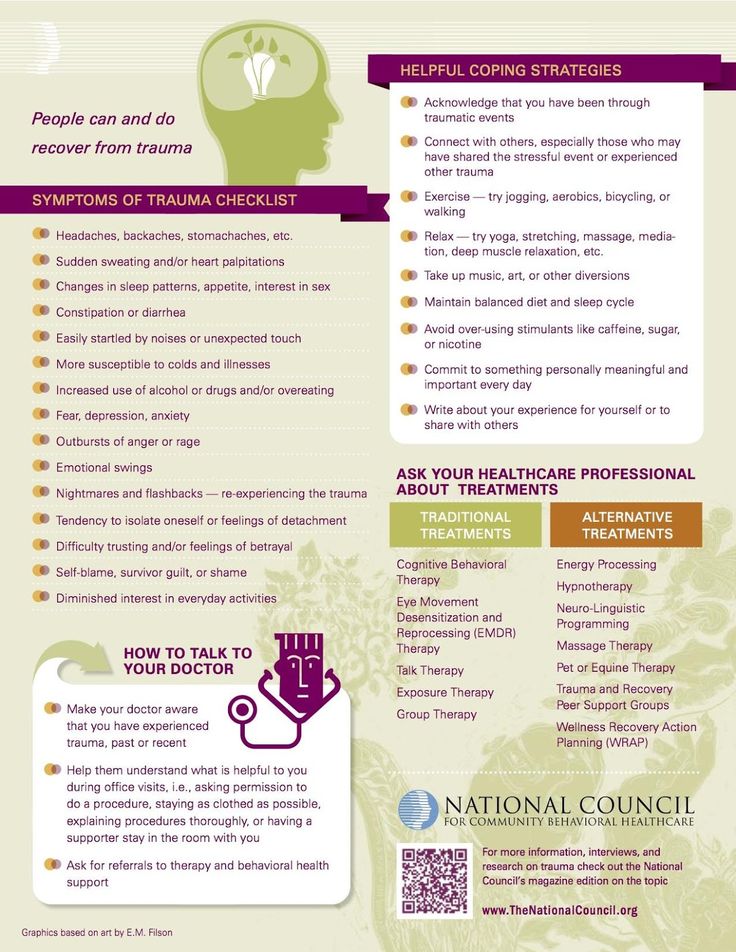 And after some practice kids are able to identify it,” she adds. ” ‘Yes, my stomach hurts and, oh yeah, I remember that’s because I’m feeling worried.’ And after learning some skills to help them calm down, I think they feel a sense of control. And that helps.”
And after some practice kids are able to identify it,” she adds. ” ‘Yes, my stomach hurts and, oh yeah, I remember that’s because I’m feeling worried.’ And after learning some skills to help them calm down, I think they feel a sense of control. And that helps.”
The first thing our experts suggest is something parents should not do, or at least try not to do: Let kids avoid things they are afraid of. It can be very tempting when children are complaining of a headache or stomach ache to let them stay home from school, or skip the party or the game they’re worried about. But avoidance actually reinforces the anxiety.
“If we’re allowing them to avoid it,” says Ms. Greenspan, “then they’re not able to learn that they can tolerate it.” The message needs to be: “I know it hurts, I know it’s uncomfortable, but I know you can do it.”
Another things parents should not do is ask children leading questions like “Are you worried about the math test?” Questions should be open ended, to avoid suggesting that you expect them to be anxious: “How are you feeling about the math test?”
If the problems your child is having are disrupting their ability to go to school consistently — or concentrate at school, participate in activities, socialize with peers — they might have developed an anxiety disorder that should be treated by a mental health professional.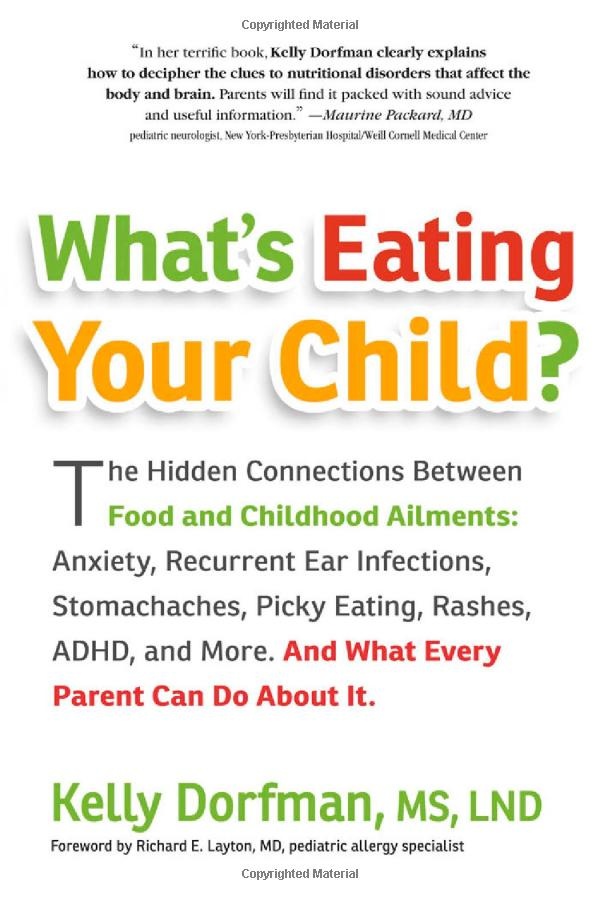 The treatment favored by most clinicians for anxiety disorders is cognitive behavioral therapy (CBT). CBT helps kids — as young as 5 years old — identify their anxiety and learn skills to reduce it.
The treatment favored by most clinicians for anxiety disorders is cognitive behavioral therapy (CBT). CBT helps kids — as young as 5 years old — identify their anxiety and learn skills to reduce it.
The techniques clinicians teach children to calm down body and mind can also be deployed by parents, for children with less impairing symptoms.
Techniques for calming downHere are some of the techniques clinicians teach anxious children, adapted from CBT and mindfulness training:
Deep breathing: Drawing in air by expanding the belly, sometimes called belly breathing, helps kids relax by slowing breathing, and reducing the heart rate, blood pressure and stress hormones. It can also help relax tense stomach muscles.
Mindfulness exercises: Techniques such as focusing on what’s around them, what they see and hear, can help pull children away from the anxiety and ground them in the moment.
Coping statements: Children are taught to “talk back to their worries,” Ms. Greenspan explains. “They can say, ‘I’m feeling scared and I can handle it.’ Or something along the lines of, ‘I’m bigger than my anxiety.’”
Greenspan explains. “They can say, ‘I’m feeling scared and I can handle it.’ Or something along the lines of, ‘I’m bigger than my anxiety.’”
Coping ahead: Children are taught that when you have to do something that makes you nervous, it helps to anticipate that you might have some discomfort, and plan what you can do to counteract it, knowing that if you can push through it, it will get easier.
Acceptance: This involves acknowledging the discomfort without fighting it. “Instead of trying to push the feeling away and get rid of it,” Dr. Domingues explains, “we ask you to hold onto it and tolerate it and get through it.”
It’s only natural that parents don’t want to see their kids in distress or make them go to school when they’re worried that they’ll throw up. That puts parents in a difficult spot. “What we hear from parents is, ‘We just let them stay home one day — and one day led to three months,’ ” says Dr.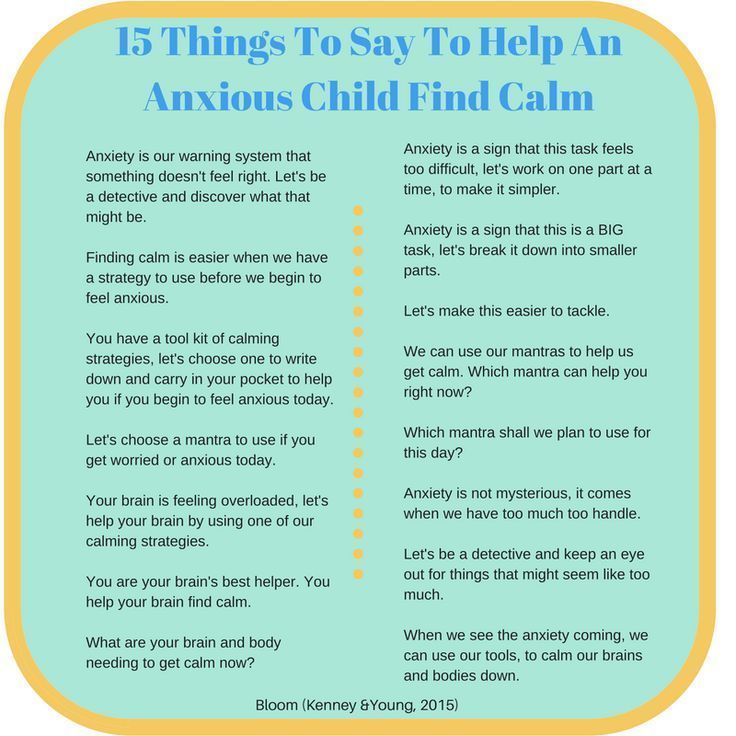 Domingues. It’s a slippery slope — the child may ask to stay home more and more.
Domingues. It’s a slippery slope — the child may ask to stay home more and more.
“So we work with parents a lot around how to find that balance between enabling anxiety and meeting a child where they are,” she adds. “And we also give them statements that they can use to be empathic and encouraging at the same time. For instance: ‘I know that this is really hard and you feel like you’re sick. But we also know that this is anxiety, and you can get through it.’ ”
Sometimes setting up a reward system can help by giving a lot of positive reinforcement for kids pushing through their anxiety.
Parents also face the challenge of tolerating their own anxiety about pushing a child who says they are ill or worried about vomiting. “If your kid is in distress and talking about not wanting to go to school or feeling sick or thinking they might throw up,” says Dr. Domingues, “then you’re, as a parent, also anxious that that might happen.”
Working with the schoolThe school plays an important role when kids develop physical symptoms of anxiety.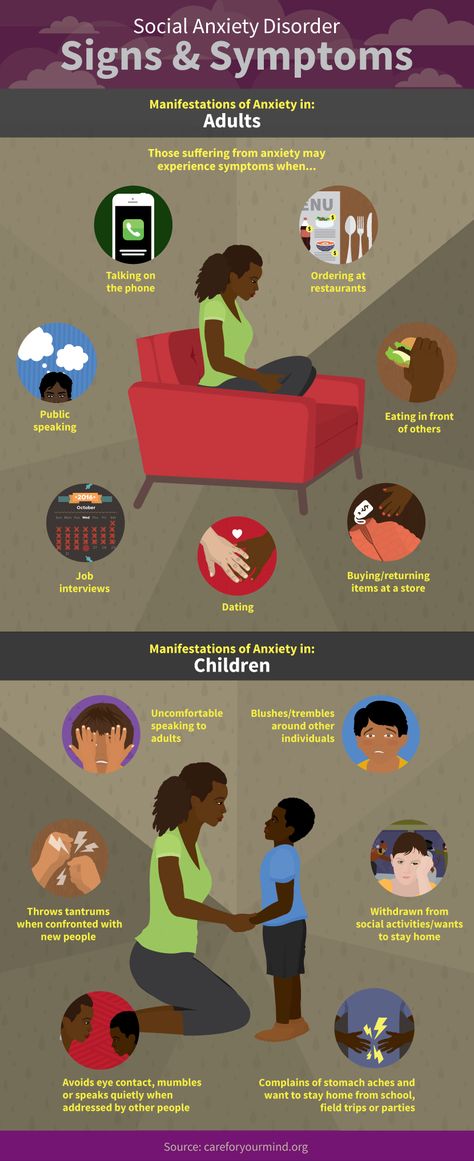 Clinicians work with the school nurse — and sometimes the psychologist or school counselor — to set up a protocol for keeping the child’s absences from class as short as possible. For instance, the recommended amount of time to wait before encouraging the child to go back to class might be as short as five minutes.
Clinicians work with the school nurse — and sometimes the psychologist or school counselor — to set up a protocol for keeping the child’s absences from class as short as possible. For instance, the recommended amount of time to wait before encouraging the child to go back to class might be as short as five minutes.
“As much as we can, we urge them not to contact the parent or send the child home if they’re saying that they’re nauseous,” adds Dr. Domingues, “if we know that they are feeling this way because they’re anxious.” The shorter the break can be, the better it is, because the longer they’re out of the thing that’s making them feel anxious, she says, the harder it will be to get them back in.
This sort of symptoms can appear in a wide-range of children, but they’re most common in the grade-school years, notes Ms. Greenspan. “As kids get older and transition into adolescence and adulthood, they are more likely to manifest their anxiety symptoms in other ways.”
Video Resources for Kids
Teach your kids mental health skills with video resources from The California Healthy Minds, Thriving Kids Project.
Start Watching
School Anxiety & Stomach Aches: How to Help Your Child
If your child is complaining of stomach pain and headaches, their pain could stem from school anxiety.
Perhaps it’s no surprise that some children experience headaches and/or stomachaches with a dread of going to school. They may balk at going at all.
Katie Spencer, Psy.D, HSP, helps children recognize that we all have physical feelings that come with our emotions. Spencer is a licensed pediatric psychologist who works with children admitted to Monroe Carell Jr. Children’s Hospital at Vanderbilt for medical and/or mental health concerns.
How anxiety causes stomach pains in children
Spencer explains the school-day stomachaches to anxious children this way: When excited, we may experience a burst of energy — like the silly character Olaf in the Disney movie “Frozen.” When we are angry, we may feel hot and tense, like the Hulk in Marvel comics. And when calm, we may feel warm and relaxed, like we’re on a beach vacation. A child can experience “butterflies” in the stomach when thinking about a test at school, feel like the heart is racing before before try-outs for a sports team, or have trouble catching his or her breath when hearing bad news.
A child can experience “butterflies” in the stomach when thinking about a test at school, feel like the heart is racing before before try-outs for a sports team, or have trouble catching his or her breath when hearing bad news.
Physical feelings connected to emotions are common, and automatic. This is known as the mind-body connection.
When worried, sad or stressed for a long time, children (adults, too!) may complain of headaches, stomachaches or other physical discomfort. There can be physical reasons for headaches or stomachaches, so if this is happening frequently with your child, you should discuss it with the pediatrician. Be aware, however, that these complaints of stomach pains in the morning can also be caused by stress or school anxiety. Difficult emotions can also worsen pre-existing pains.
How to talk to your child about school anxiety
“Many children have a hard time understanding how their emotions connect to these physical (somatic) symptoms,” Spencer said.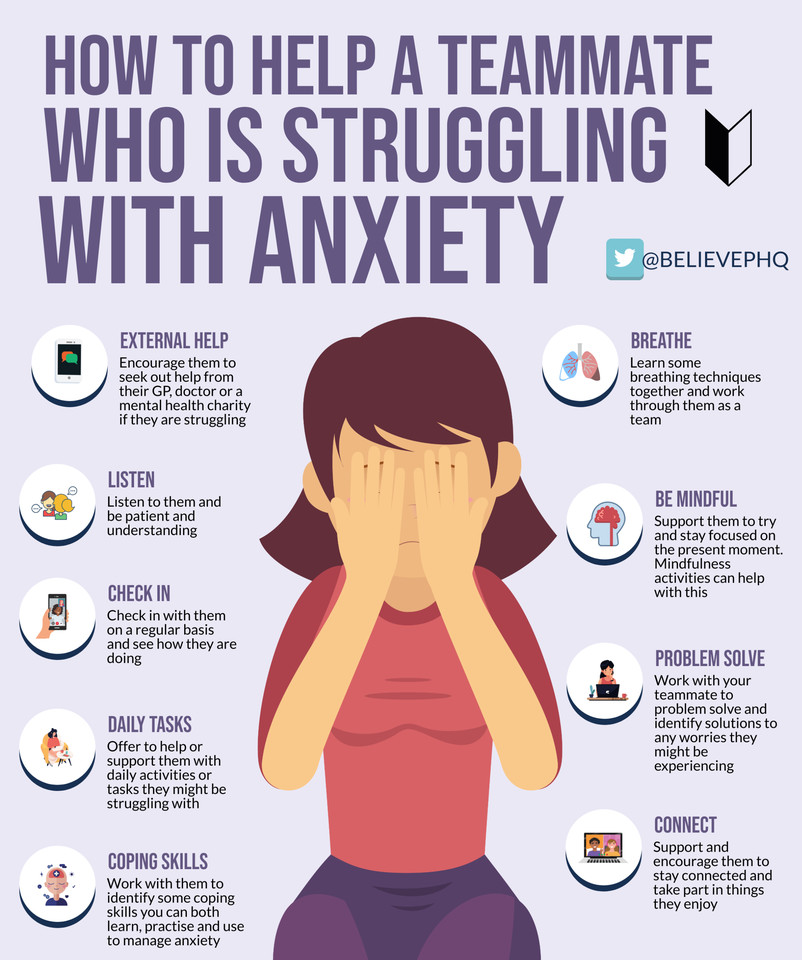 “It can be helpful to talk to your child about the mind-body connection, label her emotions, validate her feelings (even if you disagree), and recognize that the pain she has is real. Knowing you can talk with her about it and help her manage the symptoms is important.”
“It can be helpful to talk to your child about the mind-body connection, label her emotions, validate her feelings (even if you disagree), and recognize that the pain she has is real. Knowing you can talk with her about it and help her manage the symptoms is important.”
Diagnoses of anxiety in children are increasing. Spencer reports that she and her colleagues are seeing more children with pain and somatic symptoms. When symptoms last a long time and are more intense, it can be hard for children to do their regular activities, such as going to school, playing sports and socializing with friends. Some children refuse to go to school or are sent home early, and this cycle can be hard to break and difficult for families.
How parents can help a child with anxiety stomachaches
Spencer suggests these tips to ease a child’s school anxiety:
- Keep doing normal daily activities. Even when the pain is present, maintain a regular routine, including going to school and participating in sports and social activities.
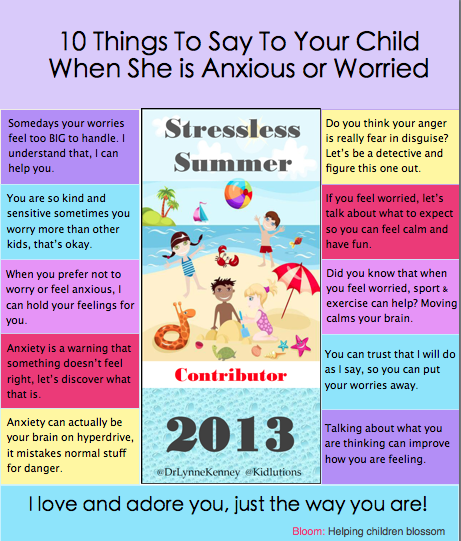
If reducing some activity is necessary, be sure you’re not providing any “special” treatment – for example, don’t let your child stay home and play video games all day. (If it’s more fun to be home, Spencer pointed out, “why would they want to go back to school?”) Gradually increase activity. Talk with your child’s teacher, school counselor and pediatrician to help with a full return to school.
- Minimize the attention you give to your child’s symptoms. Keep your general focus instead on what the child can do rather than what the child cannot. Talking about the pain and paying attention to the pain complaints can make it worse.
- Focus on healthy coping. Help your child shift attention away from pain and toward distracting activities and helpful coping strategies. Coping strategies may include deep breathing (“belly breathing”) and muscle relaxation. Keep coping skills calm and fun.
Coping skills for school-related anxiety
Generally, Spencer advised, parents should view a child missing school like an adult missing work. If they miss a lot of school (to the point that they’re not doing their “job”), this is a sign you need some help. Start by talking to your child’s school counselor and school nurse to create a plan. Some children respond well to a reward system for attendance. Others do well with 5- to 10-minute breaks during the school day to use their coping strategy before returning to class.
A child psychologist or counselor can help children (and parents) learn ways to better cope with anxiety, stress and pain. Spencer also encourages parents to practice coping strategies with their child, making it a positive experience to work through symptoms together.
Katie Spencer, PsyD, HSP is a licensed pediatric psychologist with over 10 years of experience working with children, teens and young adults with chronic medical conditions, anxiety and mood disorders. She is an Assistant Professor of Clinical Pediatrics at Monroe Carell Jr. Children’s Hospital at Vanderbilt and works with children admitted to the hospital for medical and/or mental health conditions.
After-Hours care for your child
Vanderbilt’s Children’s After-Hours Clinics offer the convenience of a walk-in clinic with care provided by a board-certified pediatrician from Children’s Hospital. No appointment is necessary, but it’s wise to call your child’s pediatrician first.
Convenient locations
Tags:
Early Childhood Middle Childhood TeensA CHILD HAS A STOMACH
How often do we hear from our children, “Oh, my stomach hurts!”. Children complain in the morning when they are going to kindergarten or school, and in the evening when they go to bed, and during meals with the words “I don’t want to anymore.” At the same time, parents react differently: who runs to call an ambulance, and someone brushes it off, “you always come up with something. ” How not to be mistaken, what to do if the child complained about the tummy.
Children rarely lie just like that. Sometimes a child may say that his stomach hurts in order to attract his mother, without even experiencing discomfort in his stomach, but this is still an alarming bell, because he did not complain about his leg, head or something else, which means he periodically experiences pain or stomach discomfort!
Children of preschool and primary school age will complain of pain not only when they experience real pain, but also with flatulence (increased gas formation) and nausea and rumbling in the stomach and discomfort in the stomach. When a child says “I can’t do it any more, my stomach hurts” while eating, do not rush to scold him. He cannot say “I have a feeling of early satiety”, but most likely he has this particular pathological symptom, which occurs with gastritis, functional dyspepsia and other diseases.
If your child complains of abdominal pain in the morning, it may not be due to a desire to stay at home, but he or she has so-called “fasting pains”, one of the signs of gastroduodenitis, peptic ulcer. Or maybe he just doesn't want to have breakfast, and not because he's stubborn, but because his enzymes haven't "woken up" yet. Feeding such children a "full" breakfast is not possible, and it is not necessary. Let the child eat a portion of yogurt with tea, and in kindergarten or at school (i.e. 2 hours after waking up) he will have a second breakfast.
The child may complain about the stomach when he wants to go to the toilet. More often this happens with constipation, when the process of emptying the intestines is painful. It may be that at present defecation in such children is already painless, but earlier, the stool was accompanied by severe pain and the child REMEMBERED this! Now the little (but not necessarily the little) little man has a fear - "it will hurt now."
What is abdominal pain and when does it appear. The sensation of pain is the body's response to irritation of pain receptors located in the walls of internal organs (stomach, intestines) or a capsule covering an organ, such as the liver. When stretching the wall, capsule, inflammation, we experience pain. With spasm of the muscular organs, with pain in the abdomen, it is primarily the intestines, the receptors are also irritated and we feel pain. Abdominal pain may be due to irritation of the peritoneum - a sheet of tissue covering the internal organs of the abdomen. This is more often observed in acute surgical pathology, such as appendicitis.
The pain can be acute, when a person feels a "prick", such pain is often compared with a "dagger pain" or dull - aching pain, of moderate intensity.
Pain can be chronic, when a person complains day after day, but not necessarily all the time. The pain can let go and return again, while the degree of intensity can be different from acute cramping to dull, barely distinguishable.
By localization, the pain can be diffuse - when the pain is the whole abdomen and localized, when you can specify the painful point.
Pain may be associated not with a disease of the internal organ, but with damage to the nervous system, both central and peripheral. With a tumor in the brain, pain can be in different places, incl. and in the abdomen, with pain often accompanied by vomiting. With autonomic dysfunction, abdominal pain may be accompanied by pallor of the skin, nausea, vomiting, and cold sweat.
What to do if your child complains of abdominal pain. Firstly, do not panic, talk to the child about how it hurts, where, while not forgetting that young children cannot localize the pain and will often point to the navel, even if they have pain under the ribs. Do not demonstratively neglect the complaint, even if you think that this is an invention of the baby. Talk to him, promise to give a pill, go to the doctor, do an examination. Never frighten a child with a visit to a doctor or any examination, in the future the child may be afraid of medical institutions and will hide complaints from you, which will lead to late diagnosis of the disease.
If the child complains of abdominal pain, ask when the child last pooped, maybe he is constipated. Parents should daily monitor the defecation of the child, not only the preschooler, but also the younger schoolchild, and at an older age, you should regularly ask your child if he had stool today, what consistency, if there were any impurities (blood, mucus, not digested food). Often parents do not pay attention to such an IMPORTANT physiological process as defecation, but given the frequency, consistency of stool, the presence of impurities, the doctor will be able to prescribe NECESSARY examinations (and not all that are in the arsenal of modern medicine), which will allow you to quickly diagnose and prescribe treatment.
Of the drugs on your own without a doctor's prescription, with the first pain syndrome, you can only enveloping agents and sorbents. If you give your child painkillers, an antibacterial drug or an antispasmodic (no-shpu), then you can blur the picture, and the doctor will not be able to make a diagnosis, which is very dangerous, for example, with appendicitis. It is better to call a doctor, let him look at the child, if necessary, prescribe tests and examinations.
In conclusion, I will emphasize once again. The child's complaints of pain are always an alarming symptom. Consult a doctor, undergo an examination and you will not have to think that this is “inflammation of the abdomen or tricks”. Be healthy!
Cape Town's Sneaker Culture is Unlike Anywhere Else in the World
Anxiety disorders in children. What are Anxiety Disorders in Children?
IMPORTANT
The information in this section should not be used for self-diagnosis or self-treatment. In case of pain or other exacerbation of the disease, only the attending physician should prescribe diagnostic tests. For diagnosis and proper treatment, you should contact your doctor.
Anxiety disorders in children are a group of affective disorders characterized by emotional stress, anxiety, and fears. At the center of the child's experiences are negative expectations and premonitions about his own life, health, relationships in the family and school. Sometimes anxiety takes the form of obsessive thoughts, compulsions, phobias, panic attacks, and nightmares. The main diagnostic methods are history taking, conversation, observation. Additionally, psychodiagnostics is used. A common treatment is cognitive behavioral therapy in combination with antidepressants and anxiolytics.
ICD-10
F41 Other anxiety disorders
- Causes
- Pathogenesis
- Classification
- Symptoms
- Complications
- Diagnostics
- Treatment of anxiety disorders in children
- Prognosis and prevention
- Prices for treatment
General
Anxiety disorders in children are a broad group of emotional disorders in childhood. Their prevalence is constantly growing, currently pathology ranks second among mental illnesses in childhood and adolescence (after behavioral abnormalities). Active research over the past 20 years has made it possible to identify new nosological units, which are now included in the ICD-10 and DSM-IV - the official classifiers of diseases.
Epidemiological indicators range from 4 to 15% in various age groups. Preschoolers and younger schoolchildren are most susceptible to anxiety symptoms. In girls, variants of disorders with a pronounced emotional component predominate, in boys - with a somatic component (digestion and sleep disorders, abdominal and headaches).
Anxiety disorders in children
Causes
Anxiety is a natural reaction that increases concentration and activates the mechanisms of fight or flight in a situation of threat. With its strengthening, the adaptation process is disrupted, constant psychophysiological tension leads to exhaustion. In such cases, they speak of an anxiety disorder. In children, it can be caused by:
- Congenital factors.
The results of twin studies prove that the tendency to intense anxiety is inherited. It may be due to the peculiarities of humoral regulation and functioning of the nervous system. Also at risk are children with prenatal and natal lesions of the central nervous system.
- Style of education. Anxiety symptoms are formed as a result of a certain attitude of parents towards a child. The development of disorders is facilitated by the psychasthenic traits of the mother (less often, the father), hyperprotection, and directive methods of education.
- A traumatic event. Anxiety in a child can be triggered by the experience of illness, separation from a loved one, a sharp deterioration in the material capabilities of the family, disasters, natural and military-political disasters. A single impact of psychotrauma is more easily tolerated by children, repeated episodes form neurotic disorders.
Pathogenesis
The periodic manifestation of anxiety is a normal reaction of the body, serves as a motivational component of behavior, providing a high level of vigilance, purposefulness and readiness to make efforts to achieve results.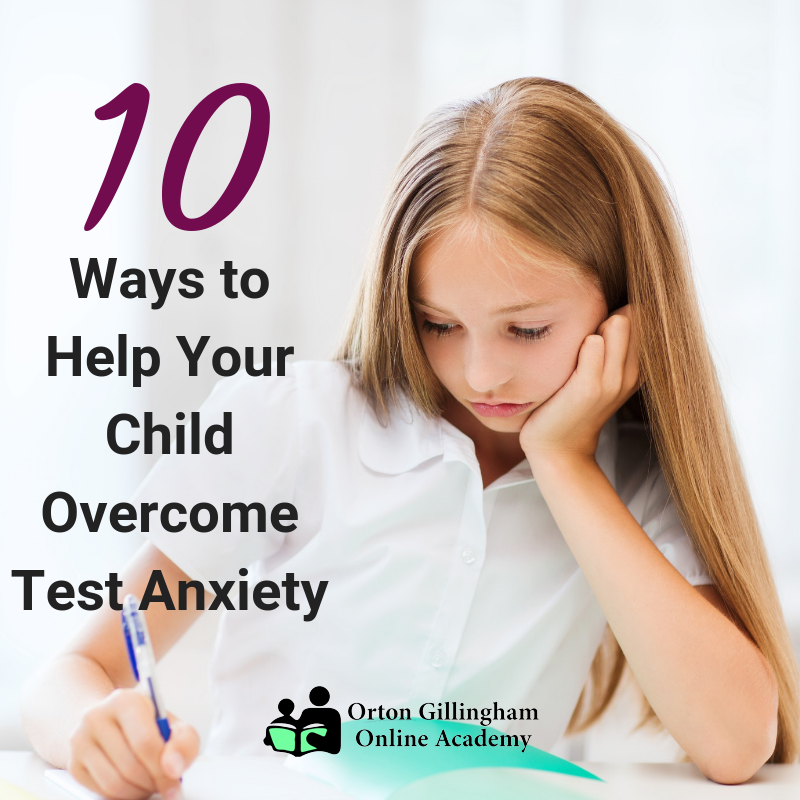 However, frequent, uncontrollable fears negatively affect the ability to adequately assess the situation and act purposefully, and in severe cases distort the perception of everyday events. Anxiety is always future-oriented and is manifested by fear of what may happen. The more pronounced the disorder, the wider the range of events that are regarded as dangerous.
However, frequent, uncontrollable fears negatively affect the ability to adequately assess the situation and act purposefully, and in severe cases distort the perception of everyday events. Anxiety is always future-oriented and is manifested by fear of what may happen. The more pronounced the disorder, the wider the range of events that are regarded as dangerous.
At the physiological level, high anxiety is associated with dysfunctions in the parts of the limbic system and the hippocampus responsible for regulating emotions. IP Pavlov considered fear and anxiety as variants of the manifestation of a passive-defensive reflex. These emotions are based on the instinct of self-preservation, which activates all body systems for flight or fight. And if normally the excitation and inhibition of the central nervous system is balanced, the natural defensive reflex is replaced by relaxation, then with an anxiety disorder there is a rigidity of neural processes - an emotion that has become irrelevant is experienced again and again.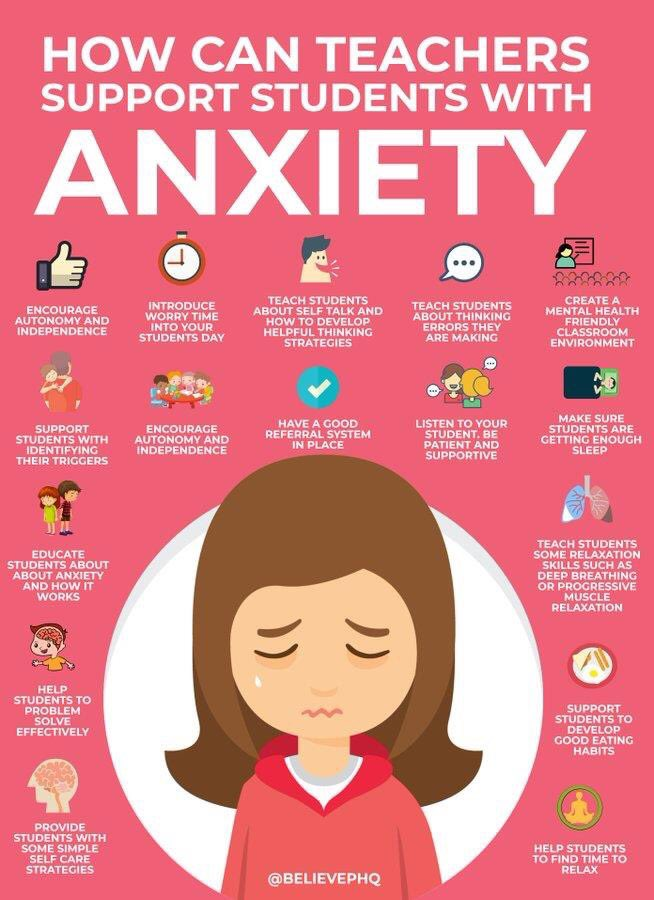
Classification
There are many types of childhood anxiety disorders with different symptoms. Their common manifestation is prolonged anxiety, inadequate to the existing situation, which negatively affects the daily life of the child, reduces the feeling of psychological comfort. Taking into account the features of the clinical picture, there are:
- General anxiety disorder. With generalized AR, children constantly worry about various areas of life - about health, safety, relationships with peers and parents, academic success. Of all the futures, the negative one seems the most likely.
- Obsessive-compulsive disorder. In OCD, anxiety is manifested by compulsive actions and thoughts. Rituals provide a sense of calm for a short time.
- Phobias. A premonition of danger can take shape in a persistent fear (phobia) of certain objects and situations. Often children are afraid of heights, darkness, fictional monsters, social contacts.
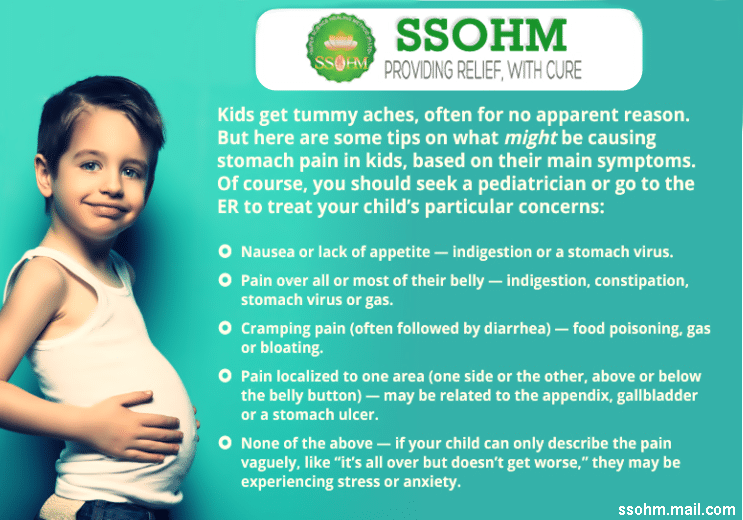
- Panic attacks. Intense anxiety is sometimes manifested by an increase in vegetative symptoms - dizziness, increased heart rate, respiratory spasm, muscle strain that make up the clinic of a panic attack. The child begins to avoid events that can provoke panic.
- Post-traumatic stress disorder. This variant of anxiety arises as a result of experiencing a traumatic event that does not fit into the framework of habitual experience. PTSD in children is manifested by a sudden flash of memories and nightmares.
Symptoms
The main symptom is persistent, pronounced anxiety. Patients feel emotionally tense, cannot distract themselves from negative experiences and relax. Due to anxiety, they have difficulty concentrating, adolescents report feeling "empty in the head." Increased nervousness is manifested by irritability, tearfulness, fearfulness. Starting at unexpected sharp sounds, changes in illumination, sudden touches is characteristic. Behavior becomes avoidant (restrictive): children refuse communication, walks, active games, travel, and the use of certain products.
Among the physical symptoms of anxiety disorders, causeless fatigue and rapid exhaustion predominate. Patients complain of dizziness, weakness, headache and muscle pain, discomfort in the abdomen and chest. There may be increased sweating, especially in stressful situations, palpitations, shortness of breath, tremors and tremors, feeling of a lump in the throat, hot flashes, chills. Appetite is often reduced, but sometimes gluttony develops, followed by nausea and vomiting. Sleep disturbances include difficulty falling asleep, waking up in the middle of the night, and nightmares.
The symptoms of phobic disorders are persistent fears. A fear of situations is formed that does not actually pose a threat or can be dangerous only under certain conditions. Young children are afraid of the dark, heights, separation from their mother. Preschoolers are actively developing their imagination, fears are associated with fabulous or fictional monsters - dragons, dinosaurs, animated skeletons, zombies, werewolves. In schoolchildren, social phobias come to the fore - the fear of communication, acquaintance, public speaking. Adolescents experience fear of loss of control, death, insanity, shame. Anxiety after experiencing a psychotrauma is characterized by "flashbacks" - uncontrollable frightening influxes of memories, nightmares at night.
In obsessive-compulsive disorder, anxiety is accompanied by the formation of obsessive ideas of a frightening nature. Children mentally play out negative scenarios, while experiencing fear. To cope with emotional stress, they are partly helped by ritual actions - compulsions. The most common are frequent washing of hands, sorting out the edges of clothes, biting nails, walking around the perimeter of the room. In panic attacks, anxiety occurs for no apparent reason and instantly increases, manifesting as autonomic symptoms. The state of health worsens - there is dizziness, darkening in the eyes, a feeling of alienation of one's own personality, the unreality of objects and events. The fear of another panic attack, avoidant behavior, is formed for the second time.
Complications
Emotional disorders often lead to complications, as children are unable to understand and critically evaluate their own experiences. They do not report a depressed mood and a constant feeling of anxiety, so the diagnosis is carried out out of time. Adolescents do not talk about disturbing thoughts, fearing misunderstanding and judgment from others. The long course of the disorder without adequate therapy is complicated by depression, autistic behavioral changes. Patients are prone to self-accusation, feel loneliness, become isolated, avoid communication. The risk of social maladaptation, suicidal attempts on the background of depression increases.
Diagnostics
The main examination is carried out by a psychiatrist: talking with parents and the child, he collects clinical and anamnestic data, finds out the presence of somatic diseases, congenital pathologies of the central nervous system, clarifies living conditions, adaptation features in kindergarten, school. With the predominance of complaints about the state of physical health, the doctor refers to a consultation with a pediatrician, a pediatric neurologist for differential diagnosis. Special research methods include:
- Conversation. In the course of easy communication with the child, the specialist often manages to determine the cause of anxiety - fears, destructive relationships at school and family, problems with learning, memories of psychotrauma. With severe anxiety, children are passive, but become more open when establishing trusting contact and discussing topical, disturbing topics.
- Surveillance. The doctor evaluates the child's emotions and behavior. The anxiety state is characterized by emotional and motor stiffness, hyperreactions to unexpected stimuli (noise outside the door, entry without warning strangers). Babies often do not want to leave their mother, they are afraid to look into the eyes.
- Questionnaires. Adolescents are asked to answer the questions of standardized methods to identify increased anxiety.
The Spielberger-Khanin scale, the Phillips school anxiety test, and the Beck anxiety test are used.
- Projective tests. To examine children of preschool and primary school age, methods are used that reveal unconscious dominant emotions (fear, anxiety) and problems in interpersonal relationships. Common diagnostic tools are drawing tests (a drawing of a person, a family, a non-existent animal) and a projective test “Choose a face” (R. Tamml, M. Dorki, V. Amen).
Treatment of anxiety disorders in children
Therapeutic assistance to children is provided by psychiatrists and psychotherapists, but for successful rehabilitation, the involvement of the mother, father and other close relatives is necessary. The volume of treatment procedures is determined individually: for mild forms of disorders, one course of psychotherapy and parental support is enough, for severe cases, long-term medication and periodic meetings with a psychologist are necessary. The general treatment regimen is as follows:
- Psychotherapy. In sessions of cognitive behavioral therapy, the psychotherapist corrects destructive attitudes, replaces negative judgments with positive ones, and teaches skills for managing emotions and solving problems. As a result, the child learns to independently resolve difficult situations, to resist the influence of stressful influences. If the anxiety is based on fears or phobias, a systematic desensitization technique is applied.
- Family psychotherapy. To eliminate the anxiety of the child, it is necessary to correct the increased anxiety of parents and problematic family relationships - factors in the development and maintenance of the disorder. Interacting with the family, the psychotherapist uses the techniques of cognitive psychotherapy, Gestalt therapy. It establishes normal communication between all family members, teaches parents to better understand the child, control emotions, and avoid situations that provoke anxiety in a son or daughter.
- Drug therapy. Medication is indicated for moderate to severe symptoms of anxiety. For long-term therapy, antidepressants are used. Selective serotonin reuptake inhibitors (SSRIs) are the drugs of choice. The use of anxiolytics under the age of 18 years is justified in exceptional cases when there are acute symptoms. For this purpose, benzodiazepines are used, therapy is carried out for a short time.
Prognosis and prevention
The likelihood of recovery is largely determined by the timeliness of the start of treatment and the willingness of family members to help the child cope with emotional problems. With early access to specialists, the prognosis is favorable. Prevention of anxiety disorders is based on trusting family relationships, the right ways of education, based on love and respect, without overprotection and authoritarianism. It is important to show sincerity, openness in communication, share your own positive experience of overcoming insecurities and fears. In difficult situations, it is necessary to provide support, in case of failures - to analyze the experience gained, to teach the child to draw conclusions.
You can share your medical history, what helped you in the treatment of anxiety disorders in children.
Sources
- Modern ideas about the diagnosis and treatment of anxiety disorders / Khaustova EA, Bezsheiko VG// International neurological journal. - 2012 - No. 2 (48).
- Anxiety in children: causes and features of manifestation/ Nekhoroshkova AN, Gribanov AV// Modern problems of science and education. - 2014 - No. 5.
- Neurosis in children / Chutko L.S. – 2017.
- Early diagnosis of anxiety-phobic disorders in adolescents in general medical practice// Popov Yu.V., Pichikov A.A. – 2012.
- This article was prepared based on the materials of the site: https://www.krasotaimedicina.ru/
IMPORTANT
Information from this section cannot be used for self-diagnosis and self-treatment.


